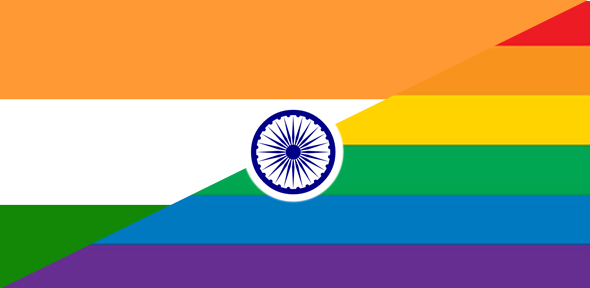Issues regarding race and the LGBT community have, for years now, been topics that I have been extremely interested in exploring. I believe that in order to help make a more equal society it is important for people to know the history that caused the current political climate to be the way that it is. Because of my own personal interest in these topics, as well as a particular interest in matters regarding my own ethnicity, I would learn about the current events surrounding the LGBT community and race on a daily basis because to a certain extent these are the topics that I chose to surround myself with and learn about more. I was intrigued when I learned that homosexuality was not actually criminalized in India until the British came along, and I found myself particularly drawn to this topic because of my own family’s blatant and unabashed homophobia that I knew came from their traditional Indian upbringing, as well as from seeing little pieces of evidence of the LGBT community in India from a long time ago. The personal investment that I have in this topic is why I am choosing this for my research paper.

Although India pre-colonialism was not entirely accepting of gay or transgender people it was certainly more varied compared to after the British got involved, especially seeing as many stories of Hindu gods involved gender fluidity and gay relationships, and even the Kama Sutra acknowledged gay sex.
One extremely old example of a transgender person is present in the Markeyanda Purana, which is a sanskrit text in Hinduism that most likely was made in 250 CE, and covers a large range of topics. One of the stories there talks about a prince who believed he was a woman, and as a result refused to marry. Another story that is part of Rajasthan’s folklore is the tale of Teeja and Beeja who are both women that are betrothed to each other by their fathers. When they are driven out by the villagers, Beeja prays to be turned into a man, but Teeja dislikes Beeja’s new form, and so the story ends with the two of them living happily together as women, away from the villagers. In the story of the king who brought the Ganges River down to Earth, a king passes away with no heirs, so Shiva tells his two widowed wives that they would have a child together. When this happened, the child was named Bhagiratha, meaning he who was born of two vulvas. This is a story that can be found in the Padma Purana, and Krittivasa Ramayana.
Another story with a same sex couple once again involved Shiva. Vishnu, another Hindu god was known to take on a female form that was known as Mohini. Shiva asks to see this form and becomes attracted to her, despite the fact that he knows Vishnu’s original gender is male. This leads to the birth of Ayappa, who is known to be born from two men.

Hinduism was not the only religion that acknowledged homosexuality, although they did discuss gender fluidity much more than other Indian religions. Muslim poets were also fairly vocal about their love for people of their own gender, and even the Mahmud of Ghazna, who is known for establishing Islam in India was in love with another man–a slave named Ayaz. There are many poems written about this couple that portray them as the ideal, perfect lovers.

I loved your Blog!!! It was really interesting to learn that homophobia wasn’t introduced until the British come and how that currently affects your life and your family’s views of the LBGT community. The culture change that resulted from the British is stunning and it’s fascinating to look back on old stories before they arrived; it seems like a completely different culture. I’m honestly very jealous you have such a great and unique topic to talk about that relates to your life! This little introduction to your topic is very promising and I wish you best luck in researching. 🙂
LikeLike